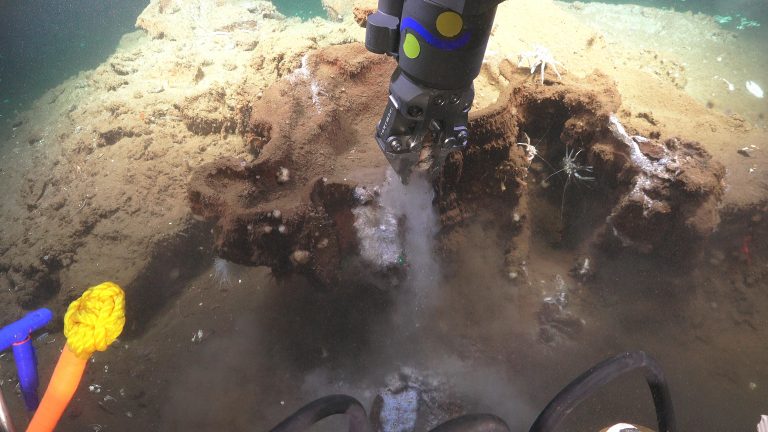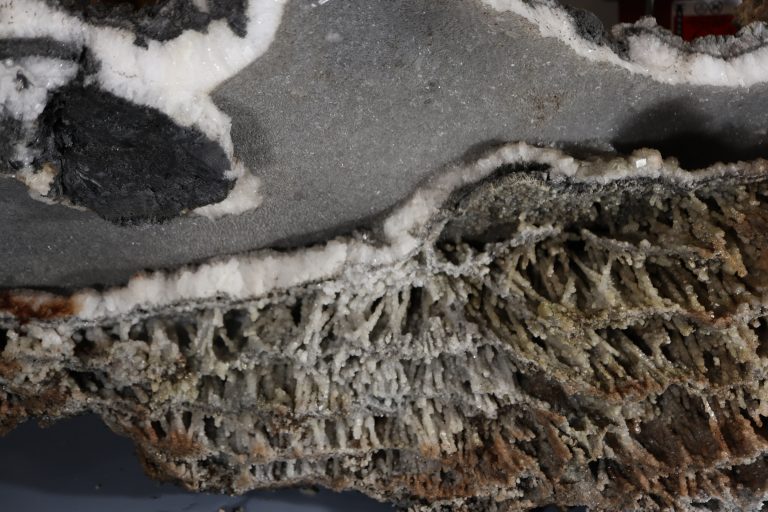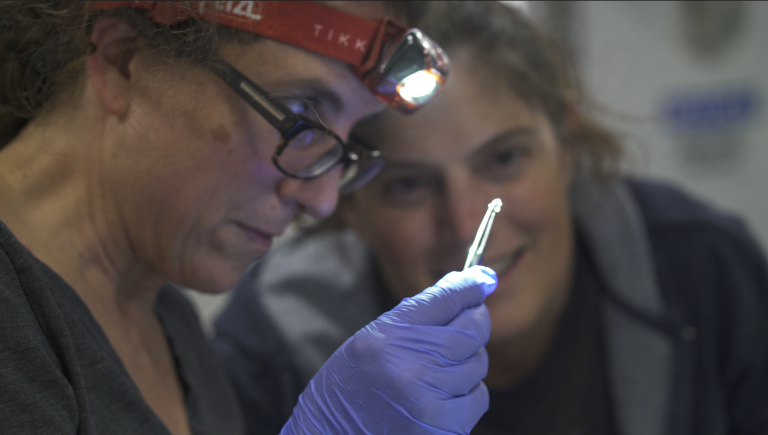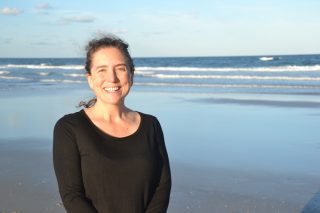On Day One, I stepped onto the dock at the seaport for Cabo San Lucas, looking out to the Pacific Ocean and wondered what we would find in the new vent field in Pescadero Basin. I hoped we would find something unexpected, something unusual—something to hint at the processes at work deep below the seabed here. The smaller boat that pulled up to carry us to the R/V Falkor was suddenly there—and in I went, with my pack and my waterproof case of gear. After a blur of wind and spray and sun, we climbed onboard to prepare for rocks and muds of the seafloor, each with a story to tell.
The Gulf of California is the long strip of blue in between Baja California and mainland Mexico. This is a fascinating place in terms of our planet’s present day: two tectonic plates are pulling apart, with the North American Plate heading to the south and the Pacific Plate to the north, with many small transform faults (where plates slide past each other, side by side) hiccupping along beneath the Gulf’s waters. The plate boundary reaches up to the north to the great San Andreas Fault (famous for rocking San Francisco with earthquakes) and south to the East Pacific Rise (a rapidly spreading center, plates moving apart faster than your fingernails grow). At Pescadero Basin, the pull-apart motion of the plates means that there is magma production deep beneath the seabed—hot rock beneath the ocean floor, which can really heat up seawater that percolates down that deep.

These super-heated waters streak back up to the ocean, reacting with the rocks of the subseafloor along the way, and reacting with fresh cold seawater itself when they punch into the ocean’s deep waters again, exiting a vent. Spectacular chimneys result, constructed of minerals that form when the hot fluids from depth react with seawater, and every chimney signals a font of chemical energy, sustaining life far from the reach of our Sun.
Life has what it needs, even here in the depths of the Pacific. The sediments have so much carbon in them that the hot conditions drive it out as methane and oily liquids, with free oil coating all of the sediment grains, even leaking out of rocks and sediments collected by the sub. Talk about a ready source of carbon for deep life! So…got carbon. Where is the energy? Hidden in the very rocks, sediments, and seafloor fluids themselves, like eternal batteries in the form of Earth materials and dissolved metals in waters, ready to fuel life in the dark. This should be a hotbed of life.

So What Do we Find?
Graceful chimneys with a central tunnel lined by pure calcite (CaCO3), and ledges underlain by the same reflective crystal—layers of glowing white blocks of crystal forming in contact with the hot vent fluids. Fine, delicate spears like frost, made of anhydrite (CaSO4)—thin and fragile, blanketing surfaces in contact with the cold ocean water. Sandwiched in between is a deep gray calcite zone, with fine, black, glittering sulfide minerals (the signature of black smoker vents) darkening the rock. And yes! Microbial mats, veils of life, draped over the rocky surfaces, sending thin, questing rootlets between crystals, digging into the body of the rocks–the basis for a whole complex food chain (e.g., deep sea anemones and scale worms!) that most of us never get a chance to see.
In the wet lab, I gently package my chips of the chimneys and scoops of seabed mud, planning to catalog the minerals occurring together in this unusual place (some I know I will find, others will surprise me) and to track the prints of life on this mineral backdrop. It will take some doing: I will use a polishing wheel to smooth samples on one side, then flip them to smooth the other side—aiming for a wafer of polished mineral about as thin as a hair on your head. Then I will pass infrared light through the wafer, and watch where organic compounds absorb it—mapping organic compounds fixed within the mineral matrix, investigating their occurrence, and relating them to the microbial communities being defined now by geomicrobiologists at work on the same materials. I am trying to catalog which markers of life endure in the rock record here. Then, as with an animal tracks guidebook with information about what life leaves behind, we can turn our gaze to other rocks (as yet unexplored regions of the deep sea, vestiges of ancient ocean floor perched now on our continental masses, even surfaces of other planets…) and look for evidence of life where we could not see it before.


